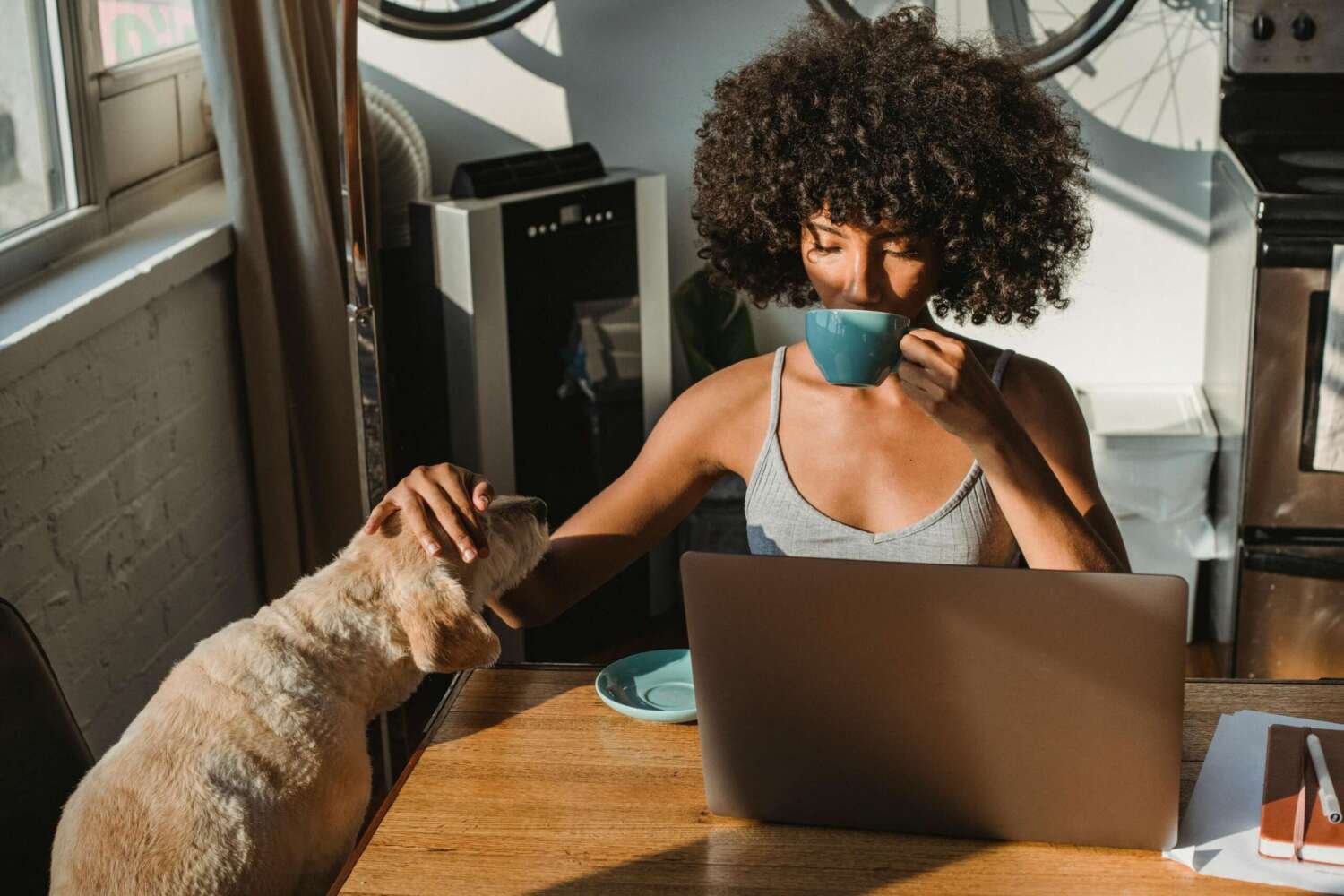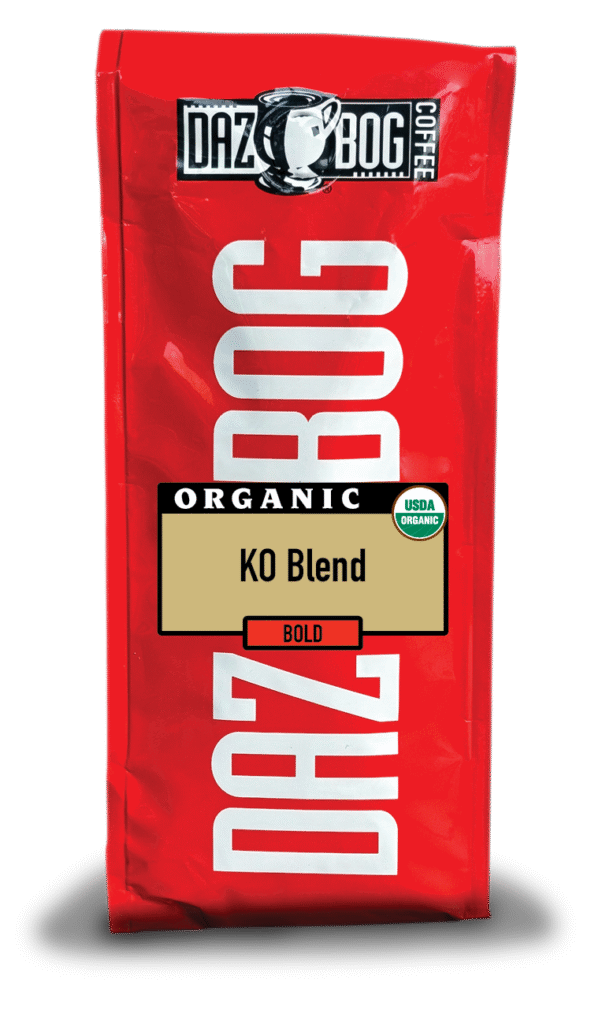How To Make Coffee At Home Eco-Friendly

Share This Article
How do you make the best cup of coffee? Leo Yuffa co-founded Dazbog Coffee in 1996, and he shares his top eco tips.
| All products featured on The Wellness Feed are independently selected by our editors. However, when you buy something through our retail links, we may earn an affiliate commission. |
Brewing coffee is a morning ritual that warms the senses and awakens the spirit. As we wrap ourselves in sweaters and scarves against the morning chill, many of us are also wrapping our hands around a warm cup of coffee made at home. Yet, if you’re used to sharing your go-to order with your barista during summer mornings, how do you make the perfect cup of coffee at home?
“Best practices are to make sure the grind is right for the brewing method you choose.” With a family steeped in the coffee industry, Leo Yuffa shares his secrets to the perfect cup of Joe. Since 1996, he and his brother have been elevating the coffee experience in Colorado as co-founders of Dazbog Coffee Company. And, he’s not light on sharing details about how to make a perfect cup of coffee at home, whether you prefer a pour-over, drip machine, or a French press.
Because it wouldn’t be a The Wellness Feed article without sharing easy-to-adapt eco-friendly tips, Leo also answers pressing questions about how to make your perfect cup of Joe more sustainable- from bean to cup- the perfect start to every morning.
Begin With Organic Coffee Beans

Dazbog Coffee Organic KO Blend is a dark roast blend from various regions. Certified USDA Organic. $17
Coffee is one of the most popular drinks worldwide, with production increasing by 60% over the last 30 years. Unchecked, coffee’s commercial growth has transformed landscapes. Once predominantly grown under the shade of forest plants to preserve delicate ecosystems, the growing demand for coffee has led to huge coffee plantations, where forests have been cleared to make room for the profitable plant. In 2025 alone, 23.5 million hectares of forests have been cut down for coffee. Oftentimes, the land’s nutrients have become depleted thanks to fertilizers, pesticides, and other chemicals to maximize output.
Like the many sustainable movements happening within the food and fashion industries, coffee is also ripe with its own terms- organic, ethically-grown, and regenerative- shoppers can look for when purchasing their beans. “Organic has strict standards and certifications, so it can be considered a reliable indicator of quality and transparency,” Leo explains. “Organic coffee is grown without the use of synthetic fertilizers and pesticides, which reduces the impact of chemicals on the product and the environment. While conventional coffee may use these chemicals, they help increase yields and protect plants from disease.”
While labels such as ‘organic’ will let you know whether or not chemicals were used on the farm, other terms, such as Fair Trade Certified, let customers know that coffee farms were vetted for fair labor practices. Yet, while these two terms are regulated to ensure certain standards are met, others aren’t.
“‘Ethically grown’, ‘sustainably grown’, ‘shade-grown’, ‘direct trade’, and others are becoming more common, but they are generally not regulated by uniform rules. Sometimes they reflect genuine practices, such as supporting farmers or preserving biodiversity, but in other cases, they are simply marketing claims,” Leo cautions. “Therefore, you should only trust such claims when the brand provides detailed information about the coffee’s sourcing and production conditions.”
Select Sustainable Packaging

Chemex® Pour-Over Glass Coffee Maker with Wood Collar is made from glass, wood, and leather. $47.95
When it comes to reducing waste, “Recyclable or biodegradable materials are certainly important from a sustainability standpoint,” Leo says. That’s in part because, every day, 2 billion cups of coffee are consumed, producing waste from disposable filters and plastic packaging.
Leo also emphasizes the importance of packaging that will preserve the freshness and flavor of your coffee. “Packaging is responsible for maintaining freshness. The best results come from airtight bags with a valve that releases carbon dioxide after roasting without allowing oxygen in. If coffee is stored in transparent or thin packaging, it loses aroma and flavor more quickly.”
Whether your coffee comes in aluminium or paper packaging, Leo recommends measuring out the coffee you’ll use for the week and transferring that into a steel, ceramic, or glass container at home. “After opening, it is best to transfer some of the beans to an airtight ceramic or stainless steel jar and store them in a cool, dark place away from light and moisture.” The rest of the beans or grounds can be left in the original container, sealed tightly.
Tips For Brewing A Perfect Cup

Crate&Barrel Fellow Atmos Large Vacuum Canister in Matte Black is a stainless steel container that is vacuum sealed. $39.95
French press? Pour over? You’ll be happy to note that when it comes to brewing coffee at home, there isn’t a right, wrong, or better than answer. It all boils down to your personal preference. “Many types of brewing methods have their pros and cons,” Leo states. What does matter is your product. “Make sure the grind is right for the brewing method you choose,” he explains. Some grocery and specialty stores allow you to ask associates to grind coffee beans to suit your preferred brewing method, or you can grind them at home using your own machine.
When brewing, be sure to follow the guidelines for your machine for the right amount of water and coffee. “Achieving the perfect extraction depends on the right ground coffee to water ratio and proper water temperature,” Leo explains. Another tip he offers is to keep everything warm. “Make sure to preheat the container in which the coffee is brewed,” he suggests.
Whichever method you choose, minimize waste by swapping single-use paper filters for durable materials like glass or stainless steel, or paper ones that can be composted. If you prefer the ease and convenience of pods, support companies that use compostable or recyclable pods. Also, swap garbage bins for gardens by composting your used coffee grounds.
So, how does Leo make coffee at home like a pro? “I prefer to brew my coffee using a double-filtered pour-over,” he states. “I use the Chemex Pour Over glass coffee maker using a steel cone with a paper filter. I feel that this method provides an intense coffee extraction that is ultra-filtered for any coffee sediment.”
However you choose to enjoy your coffee, there are choices you can make to support organic farmers and minimize waste. While seemingly small, these choices add up and can help minimize the industry’s negative impact on the environment. What better way to wake up in the morning than with a warm cup of coffee that’s already working to help save the planet?
